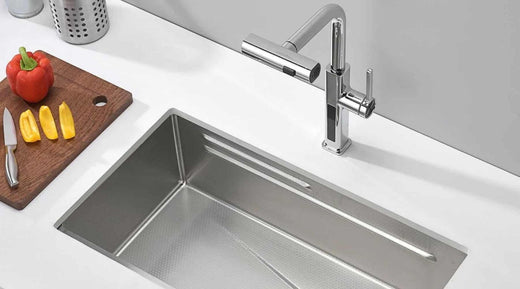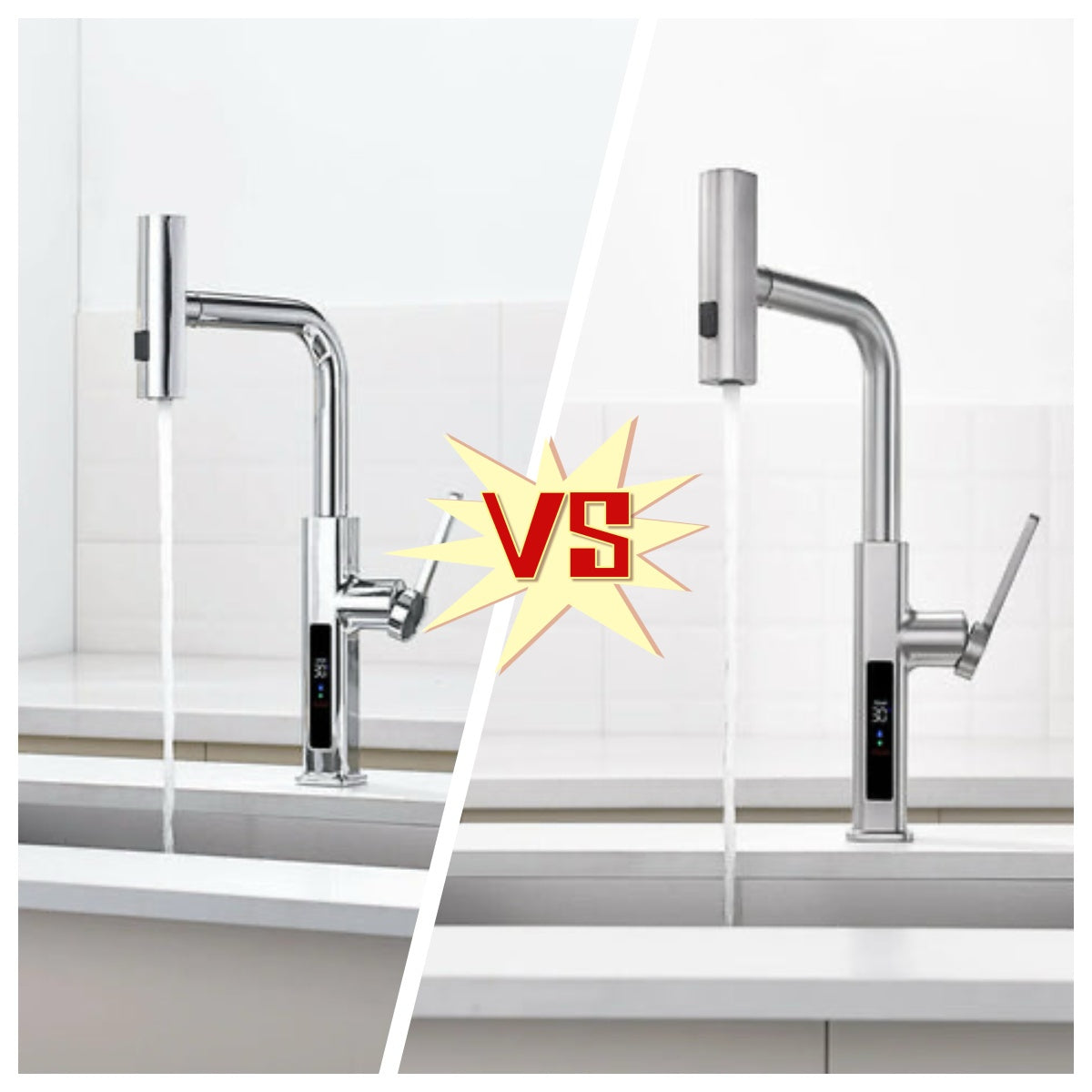Choosing the right bathroom faucet is a key decision that affects both the style and functionality of your space. Counter-mounted and wall-mounted faucets each have their own unique advantages, and the best choice for you depends on your preferences, bathroom layout, and budget. Let’s explore the differences and considerations for each type, along with answers to common questions.
Counter-Mounted Faucets
 Overview:
Overview:
Counter-mounted faucets are installed directly on the countertop or sink. They are classic, versatile, and widely used in most bathrooms.
Key Benefits:
• Easier and less expensive to install.
• Compatible with most sink styles, including undermount, drop-in, and vessel sinks.
• Available in a wide range of designs and finishes, making them adaptable to traditional and modern bathrooms.
Considerations:
• They take up countertop space, which might be an issue in smaller bathrooms.
• More prone to water splashes and spots on the countertop, requiring regular cleaning.
Wall-Mounted Faucets
 Overview:
Overview:
Wall-mounted faucets are installed on the wall above the sink, creating a sleek, modern look. They are especially popular in contemporary and minimalist bathroom designs.
Key Benefits:
• Saves countertop space, making them ideal for small bathrooms or minimalist layouts.
• Keeps the countertop cleaner by reducing water splashes.
• Pairs well with vessel sinks for a striking aesthetic.
Considerations:
• Installation is more complex and costly, requiring in-wall plumbing adjustments.
• Repairs or replacements can be more challenging since plumbing is concealed.
FAQs: Counter-Mounted vs. Wall-Mounted Faucets
Here are answers to some frequently asked questions to help you better understand these two types of faucets:
1. Are wall-mounted faucets more expensive than counter-mounted ones?
Yes, wall-mounted faucets are typically more expensive because they require additional plumbing work. Running pipes through the wall and ensuring precise alignment adds to the overall installation cost.
2. Can I install a wall-mounted faucet myself?
While DIY installation is possible for counter-mounted faucets, wall-mounted faucets are more complex. They require precise measurements and access to in-wall plumbing. If you’re not experienced in plumbing, it’s best to hire a professional.
3. Do wall-mounted faucets have a higher risk of leaking?
Not necessarily. Both types can develop leaks if not installed or maintained properly. Regular inspections and quality installation minimize the risk for either type.
4. Which type is better for a minimalist bathroom design?
Wall-mounted faucets are often preferred in minimalist designs due to their clean and streamlined appearance. They free up countertop space and create a floating effect that complements simple aesthetics.
5. How do I clean a wall-mounted faucet?
Use a damp cloth for regular cleaning. For stubborn stains, a mild cleaning solution is recommended. Avoid abrasive cleaners or tools that could damage the finish.
Which Faucet Is Right for You?
• Choose a Counter-Mounted Faucet if:
• You want an easier, more affordable installation.
• You prefer a versatile design that works with most sinks.
• Countertop space isn’t a major concern.
• Choose a Wall-Mounted Faucet if:
• You’re looking for a sleek, modern aesthetic.
• You want to save countertop space.
• You’re renovating or building a bathroom where in-wall plumbing is feasible.
Final Thoughts
Both counter-mounted and wall-mounted bathroom faucets offer unique benefits and can enhance the look and functionality of your bathroom. Counter-mounted faucets are a classic, practical choice, while wall-mounted faucets provide a modern, minimalist appeal. Consider your design preferences, space constraints, and budget before making a decision.
For a wide selection of stylish and durable faucets, explore our collection and find the perfect fit for your bathroom!



